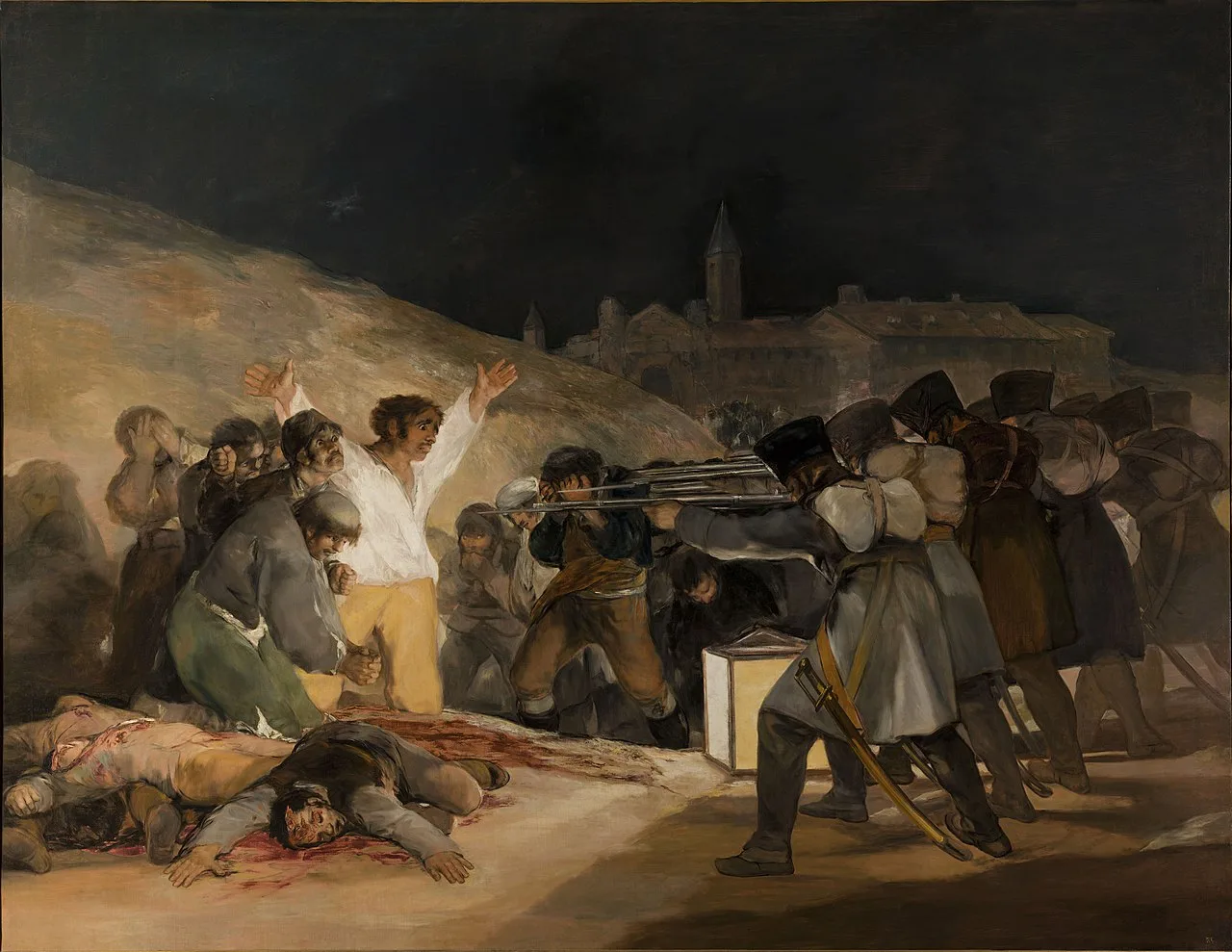Perhaps my dream is telling me I ought to paint about something more serious than the beauty of nature.
 |
| The Third of May, 1808, 1814, Francisco Goya, courtesy the Prado. |
I am seldom engaged by the news, but the death of 51 smuggled illegal migrants in a tractor-trailer in Texas has shattered my calm. It’s not just the absolute horror of the end of their lives, or the inhumanity of whatever monster left them to die. I subscribe to three different news feeds. In each of them, the story was buried somewhere below Ghislaine Maxwell’s sentence, SCOTUS protests, and the trial in Washington. That’s callous.
There was a time when this story would have resulted in a national soul-searching. In a nation where mass murder is no longer remarkable, I guess it no longer matters. I’m not interested in casting blame for it, by the way, but I sure wish there was a way we could guarantee it won’t happen again.
 |
| Charles IV of Spain and His Family, 1800–01, Francisco Goya, courtesy the Prado. |
Last night I dreamed about that most remarkable and revolutionary painter, Francisco Goya. He was a professional success, being named Primer Pintor de Cámara to the Spanish court. That was the very top of the heap for Spanish painters. His reputation was based on royal portraits and Rococo decorative arts. Had he stopped there, he would have probably been remembered as a second-rate Diego Velázquez, because, frankly, there’s nothing unique about his court painting.
And then came the Peninsular War, with Spain, Portugal and Britain attempting to stymie Napoleon’s imperial ambitions in the Iberian Peninsula. It was seven years long, it was bitter and bloody, and it was the first war in which guerrilla warfare played a major role. It left Spain and its institutions in ruin. The violence and instability didn’t stop with the end of the war, either. A long-running civil skirmish then erupted.
 |
| Plate 47 from The Disasters of War: Así sucedió (This is how it happened). Murdered monks lie by French soldiers looting church treasures, Francisco Goya, courtesy the Prado. |
Goya remained in Madrid during the war, which affected him profoundly. He never wrote or spoke of his feelings; instead, he produced the shocking Disasters of War series. It was so explosive that it wasn’t published until 35 years after his death. He also painted two paintings about the invasion, The Second of May 1808 and The Third of May 1808 (at top). The latter is one of the most famous canvases ever painted on the impact of war.
He didn’t reserve his criticism for the French, either. The Caprichos and Los Disparates etching series are about the superstition and folly of his fellow Spaniards. In fact, his entire output from this period is troubled and desperate, heavy on metaphor and allusion.
 |
| The Dog, c. 1819-23, Francisco Goya, oil mural on plaster transferred to canvas, courtesy the Prado. |
At the age of 72, Goya moved into a two-story house outside Madrid called Quinta del Sordo. Here he painted a series of murals on the walls, now known as the Black Paintings. These include The Dog, now considered the precursor of modern art. Goya never meant for anyone to see these paintings; he lived in total isolation and they weren’t removed from the walls and exhibited until 50 years after his death.
I’m no Goya—for one thing, I’m an irrepressible optimist. (That’s easier when you live in the fat and sassy United States instead of troubled 19th century Spain.) So why did I dream about him? Perhaps my reverie is telling me I ought to paint about something more serious than the beauty of nature. I shrink from examining the pain of those poor sufferers in Texas too closely, but, for heaven’s sake, someone needs to.

